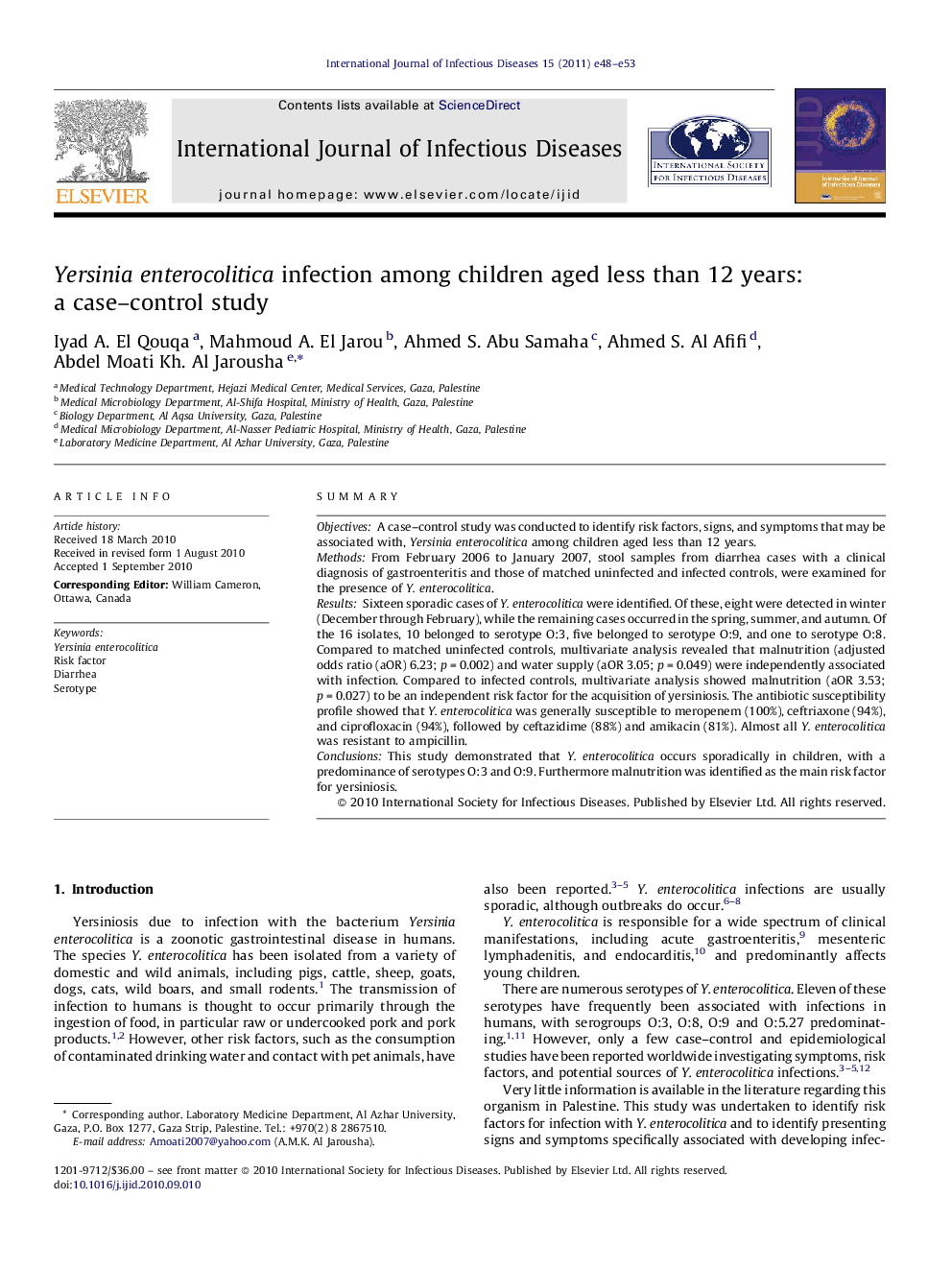| Article ID | Journal | Published Year | Pages | File Type |
|---|---|---|---|---|
| 3363110 | International Journal of Infectious Diseases | 2011 | 6 Pages |
SummaryObjectivesA case–control study was conducted to identify risk factors, signs, and symptoms that may be associated with, Yersinia enterocolitica among children aged less than 12 years.MethodsFrom February 2006 to January 2007, stool samples from diarrhea cases with a clinical diagnosis of gastroenteritis and those of matched uninfected and infected controls, were examined for the presence of Y. enterocolitica.ResultsSixteen sporadic cases of Y. enterocolitica were identified. Of these, eight were detected in winter (December through February), while the remaining cases occurred in the spring, summer, and autumn. Of the 16 isolates, 10 belonged to serotype O:3, five belonged to serotype O:9, and one to serotype O:8. Compared to matched uninfected controls, multivariate analysis revealed that malnutrition (adjusted odds ratio (aOR) 6.23; p = 0.002) and water supply (aOR 3.05; p = 0.049) were independently associated with infection. Compared to infected controls, multivariate analysis showed malnutrition (aOR 3.53; p = 0.027) to be an independent risk factor for the acquisition of yersiniosis. The antibiotic susceptibility profile showed that Y. enterocolitica was generally susceptible to meropenem (100%), ceftriaxone (94%), and ciprofloxacin (94%), followed by ceftazidime (88%) and amikacin (81%). Almost all Y. enterocolitica was resistant to ampicillin.ConclusionsThis study demonstrated that Y. enterocolitica occurs sporadically in children, with a predominance of serotypes O:3 and O:9. Furthermore malnutrition was identified as the main risk factor for yersiniosis.
